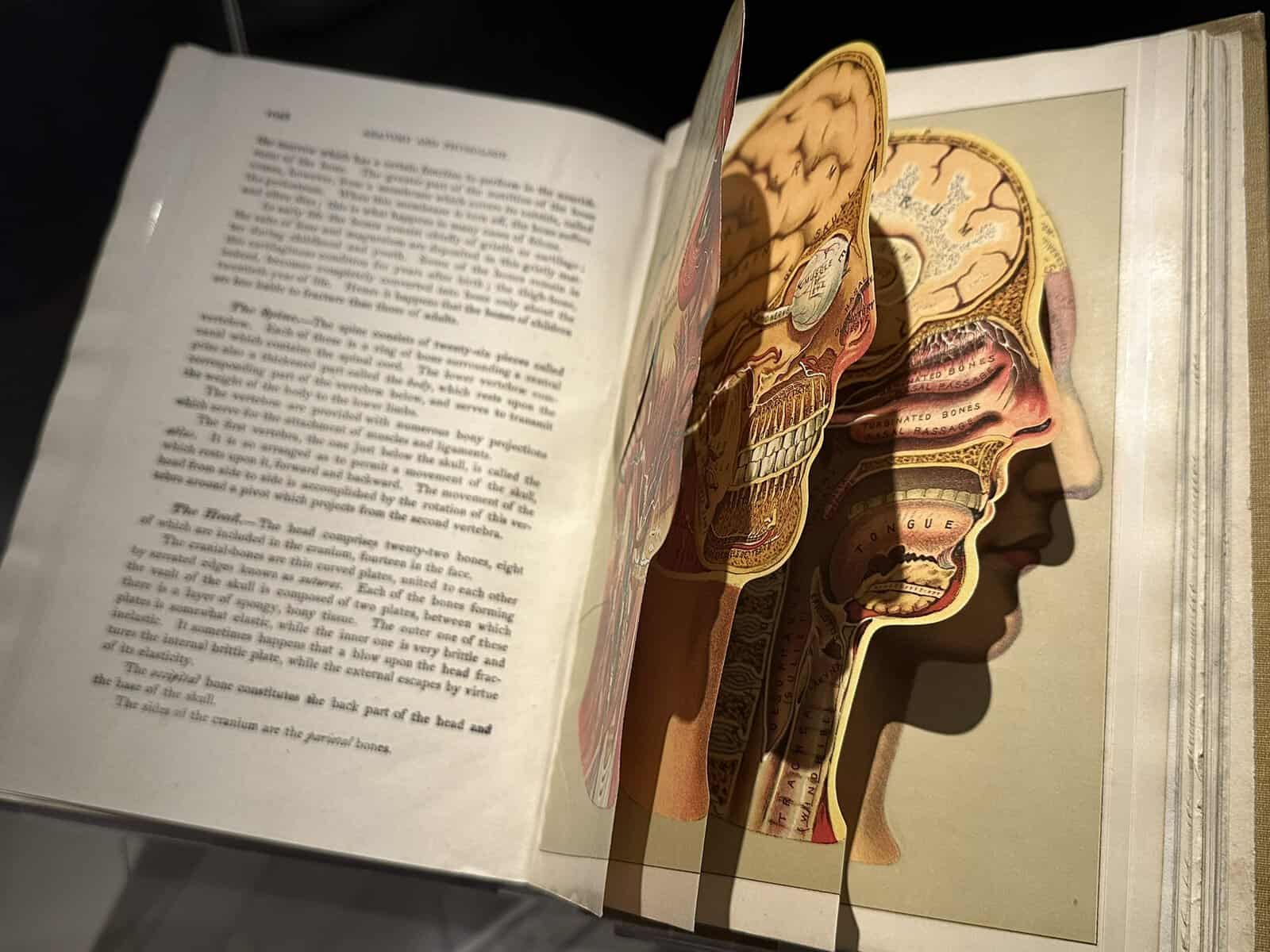
The Practical Home Doctor, by Henry M. Lyman. Chicago: America Pub. Co., 1907. [RC81 .P73 1907], John Martin Rare Book Room, Hardin Library for the Health Sciences, University of Iowa Libraries. Photo: Sara Pinkham.
From co-curator Elizabeth Yale: At the turn of the 20th century, American medicine was governed by few standards. In that context, with The Practical Home Doctor, Henry M. Lyman and his co-authors attempted to provide everyday people with a useful, evidence-based guide grounded in their professional training and experience. To that end, they supply a thorough text, along with full-page color illustrations of the vascular system, the skeleton, a number of medicinal plants, a human mid-section with six movable flaps, and a side view of the human head with three flaps, which is displayed in the exhibit. In the view of the human head, the lowest layer is a phrenological map for reading a person’s character from the bumps on their head. Yet the text specifically discredits phrenology as an outdated approach to understanding the mind. The authors wrote that “we have no reason for assuming that different mental faculties are located in different parts of the brain; there is, in other words, no physiological basis for the assertions of phrenologists. The skill which many of these gentlemen exhibit is the result of close observation of faces, rather than of knowledge derived from ‘bumps on the head.’” Yet, there it is: fold back the layers of flaps, and the reader finds a phrenological key not unlike one that could have been found in the many phrenological manuals that circulated in pre-Civil War America.
Source material:
- R.H. Collyer, Manual of phrenology, or, the physiology of the human brain (Dayton: B.F. Ells, 1842)
- Carla Bittel, “Unpacking the Phrenological Toolkit: Knowledge and Identity in Antebellum America,” in Working with Paper: Gendered Practices in the History of Knowedge, ed. Carla Bittel, Elaine Leong, Christine von Oertzen (Pittsburgh: University of Pittsburgh Press, 2019). 91-107.
